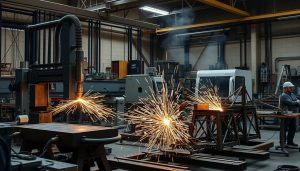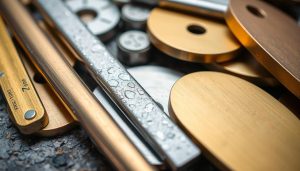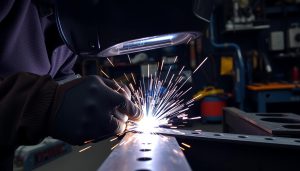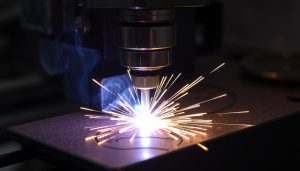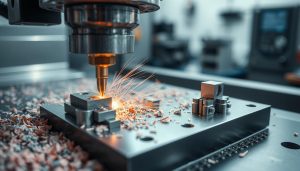In product development, Design for Manufacturing (DfM) and Design for Assembly (DfA) are key. They help make manufacturing more efficient and cost-effective. But what makes them different, and how can companies use their benefits? Figuring this out could lead to better production and profits.
What are the main differences between DfM and DfA? Knowing these can change how you make products. Read on to learn how to improve your product development.
Key Takeaways
- DfM and DfA are distinct design approaches that prioritize manufacturing efficiency and assembly simplicity, respectively.
- DfM focuses on streamlining production processes, while DfA emphasizes the ease and cost-effectiveness of product assembly.
- Understanding the key differences between these strategies can help organizations make informed decisions and unlock significant cost savings.
- Integrating DfM and DfA into a comprehensive Design for Manufacturing and Assembly (DFMA) approach can yield unparalleled benefits in terms of production optimization and scalability.
- Partnering with expert DFMA consultants can help organizations navigate the complexities of these design strategies and achieve their manufacturing and assembly goals.
What is Design for Manufacturing (DfM)?
Design for Manufacturing (DfM) is a way to make product designs better for making things cheaper and more efficiently. It focuses on making manufacturing efficiency better, cutting down production costs, and making the production optimization process smoother.
Definition and Objectives
DfM is a design method that looks at the whole making process, from start to finish. It aims to find and fix any problems in making things, making sure the design works well for production.
The main goals of DfM are:
- Lowering the number of parts and steps to put them together
- Using less material and resources
- Making the making process simpler and easier
- Improving product quality and making it consistent
- Making the whole manufacturing process more efficient
How DfM Optimizes Production Processes
By using DfM ideas early in design, makers can solve production problems before they start. This helps make manufacturing efficiency and cost reduction better. It lets them:
- Find and fix making problems early in design
- Make production flows better and cut down on assembly steps
- Use standard parts and materials to make production optimization easier
- Need less special tools and equipment, saving money
- Make products better and less likely to have mistakes
By using DfM, makers can make their manufacturing efficiency and production costs lower. This means they can give more value to their customers.
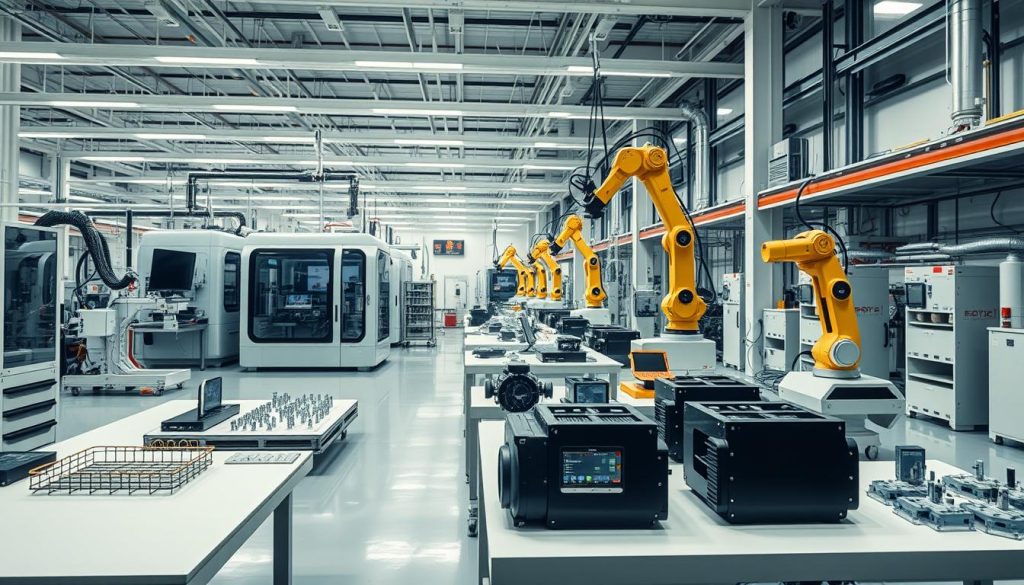
What is Design for Assembly (DfA)?
Design for Assembly (DfA) makes products easier to put together. It focuses on making the assembly process simpler. This is done by reducing parts, making the assembly order clearer, and improving how fast things can be put together.
This method is key for making things cheaper and easier to make more of. It’s all about assembly simplification, production streamlining, and component reduction.
Definition and Core Principles
At its heart, DfA is about making things simpler. It’s about using fewer parts, designing them for easy use, and making the assembly steps the same. This way, designers can make products that are easier to assemble.
By doing this, the assembly process becomes faster, cheaper, and less complicated. It’s all about making things easier to put together.
How DfA Simplifies Assembly
| DfA Principle | Benefit |
|---|---|
| Minimize the number of components | Reduces the number of parts that need to be handled and assembled, streamlining the process and lowering costs. |
| Optimize component design for easy handling and insertion | Ensures that parts can be easily grasped, oriented, and secured during the assembly process, improving efficiency and accuracy. |
| Standardize assembly methods | Allows for the use of common tools and techniques, reducing the need for specialized equipment and training, and increasing overall assembly speed. |
By using these DfA principles, manufacturers can make things easier to assemble. This leads to assembly simplification, production streamlining, and component reduction. All these help make manufacturing more efficient and cost-effective.

“Design for Assembly is a crucial strategy for driving manufacturing efficiency and cost-effectiveness. By optimizing the design for easier assembly, companies can streamline their production processes and deliver products to market more rapidly.”
Key Differences Between DfM and DfA
Design for Manufacturing (DfM) and Design for Assembly (DfA) are key in product design. They both aim to make production more efficient and cost-effective. But, they focus on different parts of the process, leading to unique benefits and considerations.
Focus Areas: Manufacturing Efficiency vs Assembly Simplicity
DfM focuses on making the manufacturing process better. It looks at design choices that can make production smoother, cut down waste, and reduce steps. This approach optimizes material use, tooling, and equipment, boosting productivity and lowering costs.
DfA, however, aims to make assembly easier. It focuses on design features that simplify assembly, reduce parts, and minimize the need for special tools. This method aims to speed up and improve assembly, saving costs and enhancing product quality.
Cost Implications of Each Approach
The costs of DfM and DfA can differ based on the product and manufacturing needs. DfM aims to lower overall manufacturing costs, leading to cheaper units and higher profits. It saves money on materials, labor, and equipment use.
DfA, on the other hand, focuses on simplifying assembly, which can cut down on assembly time and labor costs. It also reduces the need for special tools, adding to cost savings.
In the end, whether to choose DfM, DfA, or a mix (DFMA) depends on the product, manufacturing capabilities, and company goals.
Combining DfM and DfA: DFMA
The goal for any manufacturing business is to be efficient, save costs, and make better products. This is where DFMA (Design for Manufacturing and Assembly) comes in.
DFMA combines two key ideas: Design for Manufacturing (DfM) and Design for Assembly (DfA). It helps make products that are easy to make and simple to put together.
Integrated Design for Optimal Production and Assembly
The DFMA method looks at both making and assembling products from the start. This way, engineers can make smart choices that save money and improve production.
- DfM focuses on fewer parts, less waste, and smoother making processes.
- DfA makes assembly easier with simple designs and parts that are easy to handle.
By using both DfM and DfA, DFMA helps make products that are affordable to make and easy to assemble. This leads to better products and a more efficient design process.
“DFMA is a powerful tool that allows us to turn design challenges into manufacturing and assembly opportunities, ultimately delivering better products to our customers.”
Using DFMA brings many benefits, like faster production, lower costs, and better quality. This new way of designing and engineering is changing the manufacturing world.
Shixinproto’s DFMA Expertise
At Shixinproto, we specialize in Design for Manufacturing and Assembly (DFMA). Our team of experienced engineers and designers focus on making production processes better. They aim to simplify assembly to boost efficiency and growth.
Tailored Solutions for Efficient and Scalable Manufacturing
Our DFMA method starts with understanding your product needs and manufacturing abilities. We work with you to find ways to make production smoother, cut down on waste, and improve performance. Our solutions use the latest tech and methods to make your manufacturing efficient and ready for growth.
Why Shixinproto is Your Ideal Partner for Product Design
We’re proud of our product design skills and our dedication to helping businesses succeed. Our team, with expertise in engineering, design, and manufacturing, works together to make your ideas real. They ensure your production can grow. By choosing Shixinproto, you get access to our knowledge, best practices, and a custom approach to help your business succeed.
